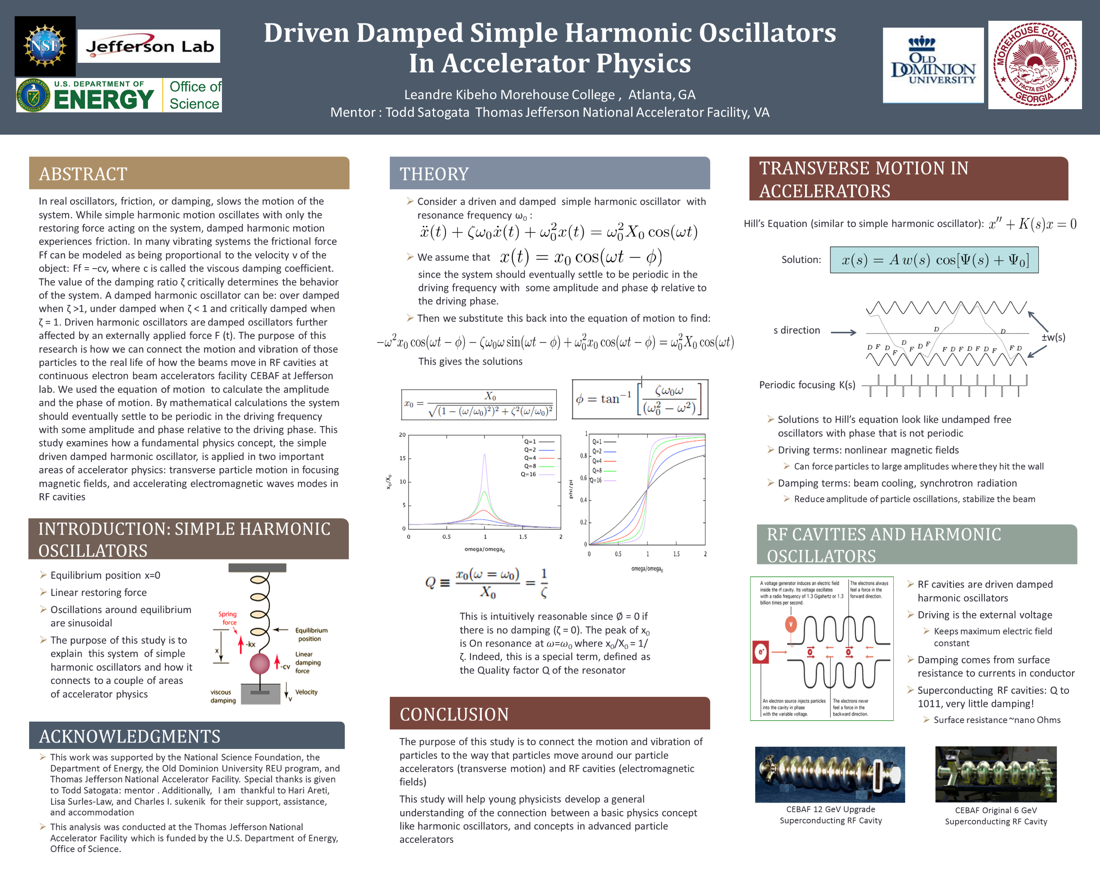Undergraduate Research at Jefferson Lab
Driven Damped Simple Harmonic Oscillators in Accelerator Physics
Student: Leandre Kibeho
School: Morehouse College
Mentored By: Todd Satogata
In real oscillators, friction, or damping, slows the motion of the system. While simple harmonic motion oscillates with only the restoring force acting on the system, damped harmonic motion experiences friction. In many vibrating systems, the frictional force Ff can be modeled as being proportional to the velocity v of the object: Ff = -cv, where c is called the viscous damping coefficient. The value of the damping ratio ζ critically determines the behavior of the system. A damped harmonic oscillator can be: over damped when ζ > 1, under damped when ζ < 1 and critically damped when ζ = 1. Driven harmonic oscillators are damped oscillators further affected by an externally applied force F(t). The purpose of this research is to demonstrate the motion and vibration of those particles to how beams realistically move in RF cavities at Jefferson Lab's continuous electron beam accelerators facility, CEBAF. We used the equation of motion, x''(t) + ζω0x'(t) + ω02x(t) = ω02X0cos(ωt), to calculate the amplitude and the phase of motion. By mathematical calculations, the system should eventually settle to be periodic in the driving frequency with some amplitude and phase relative to the driving phase. This study examines how a fundamental physics concept, the simple driven damped harmonic oscillator, is applied in two important areas of accelerator physics: transverse particle motion in focusing magnetic fields, and accelerating electromagnetic waves modes in RF cavities.

Citation and linking information
For questions about this page, please contact Education Web Administrator.
